How Many Amps Does a Washing Machine Use?
ZacharyWilliamWhether you are planning a new laundry room, trying to stop breakers from tripping, or sizing a portable power station or solar generator for backup, you need to know how many amps your washing machine actually uses. This guide walks through real-world amp ranges, how to calculate them from watts and volts, and what that means for home wiring and backup power.

Quick Answer: Typical Washing Machine Amps
In the United States, most residential washing machines use a standard 120-volt circuit. Their typical amp draw usually falls in this range:
- Most full-size washers: about 8–15 amps on a 120 V circuit
- Compact or portable washers: about 5–10 amps
- Washer–dryer combo or units with built-in electric heaters: can be higher and may use 240 V circuits in some cases
Your exact number depends on the machine’s wattage, whether it heats water internally, motor efficiency, and where in the wash cycle it is (spin cycles draw more power than filling or soaking).
| Washer Type | Typical Running Watts | Approx. Amps @ 120 V | Notes |
|---|---|---|---|
| Small / Compact washer | 400–800 W | 3–7 A | Good for apartments, RVs, and light loads. |
| Standard top-load washer | 700–1,100 W | 6–10 A | Common in U.S. homes, uses 120 V receptacle. |
| High-efficiency front-load washer | 800–1,400 W | 7–12 A | More efficient water use, slightly higher peak draw. |
| Washer–dryer combo (all-in-one) | Up to 1,500+ W | 10–15+ A | Some models use 240 V circuits and have higher overall wattage. |
Amps, Watts, and Volts: The Simple Formula
If your washer’s label lists watts (W) instead of amps (A), you can calculate amps using a very simple formula:
Amps = Watts ÷ Volts
Example 1: 1,200 W Washer on 120 V
If the nameplate says 1,200 W and the washer plugs into a standard 120 V outlet:
1,200 W ÷ 120 V = 10 A
So, that washer draws about 10 amps under normal running conditions.
Example 2: 800 W Washer on 120 V
A smaller washer rated at 800 W:
800 W ÷ 120 V ≈ 6.7 A
In real use, you might see around 6–7 amps.
Keep in mind that motors have a brief starting surge when they first spin up. That surge can be two to three times the running current for a second or two, which matters when you size breakers, generators, or portable power stations.
Amps by Washer Type and Size
Top-Load vs. Front-Load Washers
- Traditional top-load washers often use a central agitator. Their motors are modest but still draw meaningful current: typically in the 6–10 amp range during wash and spin.
- Front-load and high-efficiency models tend to use less water and can be more efficient overall, but they may draw slightly higher peak power for short bursts, especially during high-speed spin and internal water heating. Expect something like 8–12 amps on a 120 V circuit for many models.
Compact, Portable, and RV Washers
Compact and portable washers are designed for small spaces and limited power. Many of these units draw in the ballpark of 3–7 amps while running, which makes them more forgiving on small generators and portable power stations.
Washers with Internal Water Heaters
Some premium machines can heat water internally instead of relying strictly on your home’s hot water line. When the heater is active, wattage and amps increase. That is why the amp range for washing machines can extend toward the top of the 5–15 amp spectrum, especially during certain cycles.
Washer–Dryer Combos and 240 V Units
All-in-one washer–dryer units or large laundry centers may run on a 240 V circuit. In this case the amps may not look huge, but the wattage can be high because of the higher voltage and built-in electric dryer elements. For example:
- 2,400 W on 240 V = 10 A
- 3,600 W on 240 V = 15 A
Even if the amp number looks similar to a standard 120 V washer, the total power is much higher. Always follow the manufacturer’s wiring and breaker recommendations for these units.
What Circuit and Breaker Size Do You Need?
In a typical U.S. home, washers usually plug into a dedicated laundry circuit. Local codes vary, but many installations use:
- A dedicated 20 amp circuit with 12-gauge wiring for the laundry receptacle, especially if a gas dryer or other loads share the space.
- A standard 15 or 20 amp receptacle (NEMA 5-15R or 5-20R) depending on the design of the circuit and local electrical code.
The washing machine itself often pulls less than the breaker rating, but the extra headroom helps handle starting surge and prevents nuisance trips when other loads are present.
How to Check Your Own Washer’s Amp Rating
The most reliable way to know how many amps your washing machine uses is to look at its nameplate and documentation.
- Find the rating label. It is usually on the back of the washer, behind the door, or near the lid hinge. Look for a sticker or metal plate.
- Look for “A” (amps) or “W” (watts). Some labels list amps directly (for example: 10.0 A). If you only see watts, use the formula Amps = Watts ÷ Volts.
- Confirm the voltage. Most U.S. washers use 120 V circuits. Combo units may use 240 V. The label will say 120 V, 240 V, or 120/240 V.
- Note the maximum rating, not just “average use.” Use the highest listed watt or amp figure when sizing breakers, extension cords, generators, or portable power stations.
- Optional: use a plug-in energy monitor. A good energy meter can show real-time watts and amps across an entire wash cycle so you can see peaks and averages.
Can a Portable Power Station Run a Washing Machine?
Many homeowners and RV owners want their washer to keep working during outages or while off-grid. In that case, the key question is not just “How many amps does my washing machine use?” but also “Can my backup power handle both the running amps and the starting surge?”
Step 1: Check Your Washer’s Running Watts and Amps
Using the earlier formula, a typical full-size washer might look like this:
- Running power: 700–1,200 W (about 6–10 A at 120 V)
- Starting surge: up to 2–3 times running power for a second or two when the motor kicks in
That means a washer that runs at 1,000 W may briefly demand 2,000–3,000 W during startup. Your portable power station needs enough continuous output and surge capacity to handle that.
Step 2: Match the Washer to a Suitable Portable Power Station
As an example, here is how the washer amp question lines up with some UDPOWER portable power stations:
| Model | Capacity (Wh) | AC Output | Best Use Cases (related to washers) |
|---|---|---|---|
|
|
1,190 Wh LiFePO₄ | 1,200 W rated, up to 1,800 W with boost | Can support many standard 120 V washers whose running power is at or below about 1,200 W and whose start-up surge stays within the 1,800 W boost range. Also works as a home backup UPS for other essential loads. |
|
|
596 Wh LiFePO₄ | 600 W rated, 1,200 W surge | Better suited for small, compact, or portable washers with lower wattage (for example, around 400–600 W), or for running other laundry-area devices rather than a full-size washer. |
|
|
256 Wh LiFePO₄ | 400 W rated, 800 W surge | Ideal for small appliances and electronics, not for typical full-size washing machines. It may handle certain ultra-compact washers only if their wattage and surge stay well within the C400’s limits. |
These examples illustrate an important point: you must match your washer’s running and starting requirements to the power station’s continuous and surge capacity. Always compare the numbers on your washer’s label with the detailed specifications on the power station product page before relying on it as your main power source.
Step 3: Estimate Runtime from Watt-Hours
Once you know the washer’s wattage and the portable power station’s watt-hour capacity, you can roughly estimate how long the washer can run:
Runtime (hours) ≈ Battery capacity (Wh) × 0.8 ÷ Washer watts
The 0.8 factor accounts for conversion losses and the fact that you rarely use 100% of the battery capacity. For example:
- S1200 (1,190 Wh) powering a 600 W compact washer: 1,190 × 0.8 ÷ 600 ≈ 1.6 hours — roughly one to two full wash cycles, depending on how the cycle uses power.
- C600 (596 Wh) powering the same 600 W compact washer: 596 × 0.8 ÷ 600 ≈ 0.8 hours — likely one shorter or lighter cycle.
Safety Tips: Extension Cords, Power Strips, and Amps
Because washing machines pull meaningful current, it is important to think about wiring and accessories, not just the number on the label.
- Avoid light-duty extension cords. Thin cords can overheat under a 10–15 amp load, especially over long distances. If you must use an extension cord, choose one specifically rated for at least 15–20 amps with appropriate wire gauge.
- Do not plug washers into basic power strips. Most household strips are designed for small electronics, not motor loads. Plug the washer directly into a properly grounded wall outlet or a suitably rated outlet on a portable power station.
- Keep the circuit dedicated where possible. Sharing the same circuit with space heaters, irons, or other high-draw devices increases the risk of tripping breakers.
- Watch for warm outlets or cords. Warmth or discoloration around the plug is a warning sign that the circuit or accessory is overloaded or failing.
How to Reduce Power and Amp Draw
Even though amps are dictated by the machine’s design, you can still reduce average power draw and energy use:
- Wash with cold or warm water when possible. Heating water is one of the most energy-intensive parts of laundry. Using cold cycles reduces the time your machine spends at higher wattage.
- Run full, properly balanced loads. Several small loads use more total energy than one full load, and unbalanced loads can cause the motor to work harder during spin.
- Use high-spin settings. Higher spin speed removes more water, cutting dryer time and total energy use for the laundry process.
- Maintain your washer. Clean lint filters and drain pumps as recommended. A partially clogged pump forces the motor to work harder.
- Consider a high-efficiency model. Newer Energy Star–rated washers usually manage water and motor operation more efficiently, which can lower both average watts and amps across a cycle.
FAQ About Washing Machine Amps
Can I plug a washing machine into a regular 15 amp outlet?
Many washers are designed to run on standard 15 amp, 120 V outlets, and their running draw is usually well under 15 amps. However, building codes often favor a dedicated 20 amp laundry circuit for reliability and to handle combined loads. Always follow the installation instructions for your specific washer and local electrical code.
Why does my breaker trip when the washer starts?
The start-up surge of the washer’s motor may briefly push the current close to or above the breaker rating, especially if other devices share the same circuit. Other causes include a weak breaker, undersized wiring, or an aging motor. An electrician can test the circuit and confirm whether the wiring and breaker are correctly sized.
How many amps does a washing machine use on standby?
Standby power is usually very low — often less than a watt or two, essentially close to zero amps. The meaningful amp draw only occurs when the washer is actually running a cycle or spinning the drum.
Is it okay to run the washer and dryer on the same circuit?
Electric dryers almost always use a separate 240 V circuit because they draw far more power than washers. Gas dryers often share the 120 V laundry receptacle for their controls and drum motor, but the gas burner provides the heat. In any case, you should not overload a single 120 V circuit by running multiple high-draw appliances simultaneously unless it was designed for that use and meets code.
How many amps does a portable washing machine use?
Most portable washers are smaller and use less power than full-size units. A typical compact machine may use in the range of 3–7 amps at 120 V. Always confirm by checking the product label, since some “compact” combo units can still have higher power requirements.
Understanding how many amps your washing machine uses helps you plan safe wiring, choose the right backup power solution, and avoid unpleasant surprises like tripped breakers or under-sized generators. If you plan to run a washer from a portable power station such as the UDPOWER S1200 or C600, always compare your washer’s nameplate ratings with the power station’s continuous and surge specifications before relying on it in an emergency.


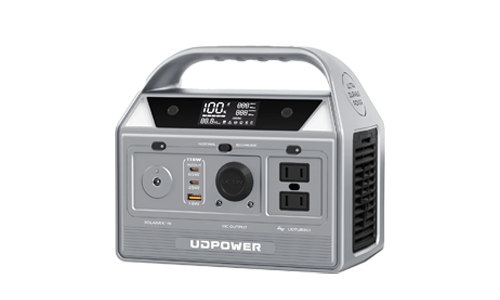
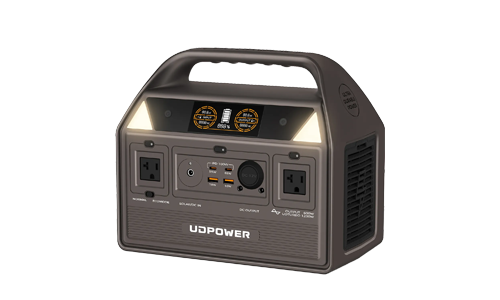
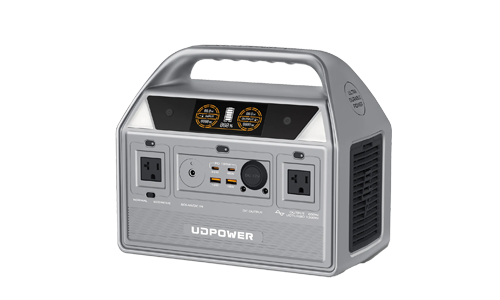





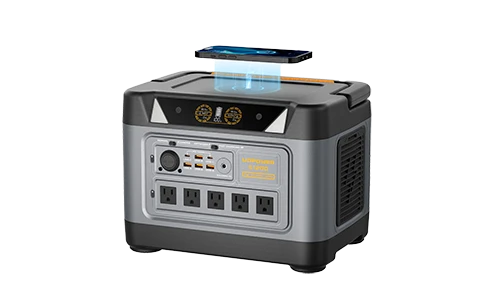



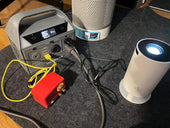
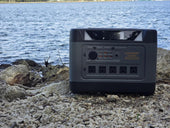
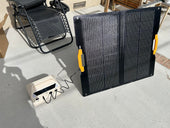









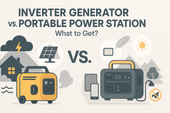
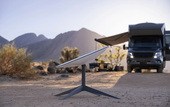



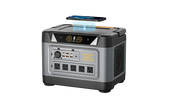







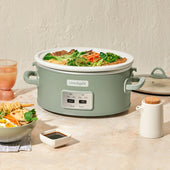






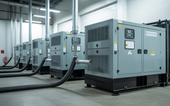
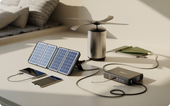



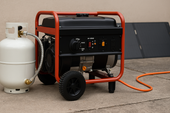
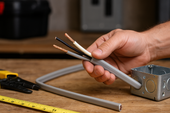
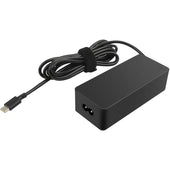

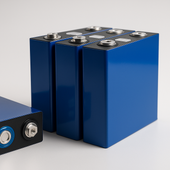











![How to Live In The Woods [Complete Guide]](http://udpwr.com/cdn/shop/articles/Off-Grid_Cabin_Option_f6c94fe7-1ae7-4c3a-baf5-ed9fe684c832.png?v=1763523215&width=170)




